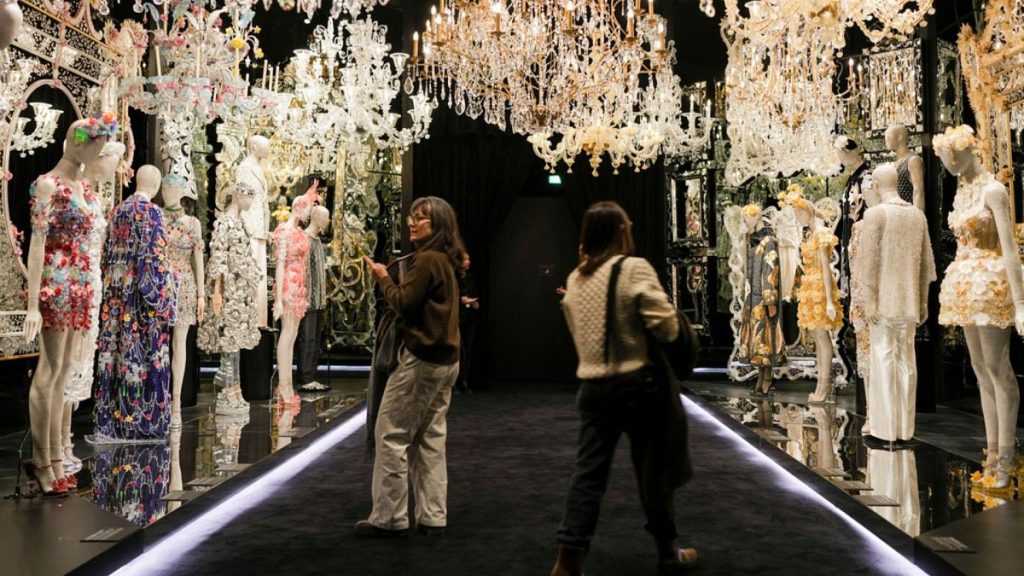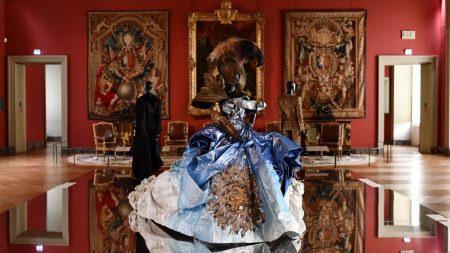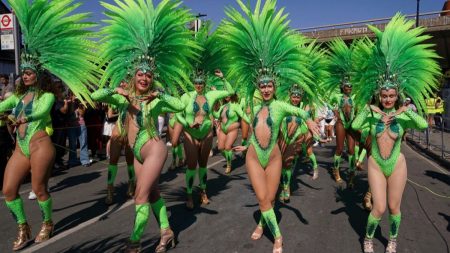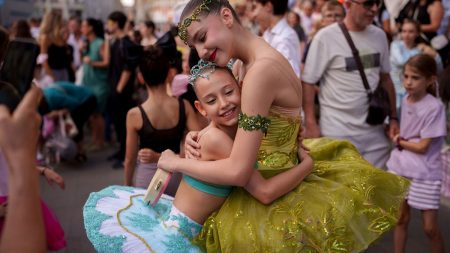Dolce & Gabbana’s debut exhibition in Paris, “Du Coeur à la Main” (From the Heart to the Hand), marks a significant moment in the Italian fashion house’s 40-year history. This exhibition, held within the newly renovated Grand Palais, not only commemorates four decades of Italian craftsmanship but also serves as a powerful statement about the interconnectedness of fashion history and the global exchange of artistic influences. The showcase, curated by Florence Müller, challenges the traditional notion of Paris as the sole epicenter of haute couture, highlighting Italy’s equally rich heritage in the world of luxury fashion. The exhibition’s message is clear: Italian craftsmanship deserves equal recognition alongside its French counterpart.
Spanning 1,200 square meters, the exhibition immerses visitors in a world of opulent beauty and meticulous detail. Over 200 ensembles from Dolce & Gabbana’s Alta Moda and Alta Sartoria collections are displayed, showcasing the brand’s signature Baroque grandeur and maximalist aesthetic. Accompanying these garments are 300 handcrafted accessories and objects, including exquisite Sicilian ceramics, that further illustrate the brand’s commitment to artistic expression. Each piece, from elaborately embellished gowns to intricately designed accessories, tells a story of skilled artisanship and a deep appreciation for beauty. A highlight of the collection is a stunning gown inspired by Venetian Murano glass, adorned with glass mosaics from Orsoni Venezia 1888, the same artisans responsible for the golden mosaics of St. Mark’s Basilica. This piece, as Müller describes, transcends mere fashion and becomes a “sculpture on textile,” a testament to the power of craftsmanship elevated to the realm of art.
The exhibition weaves a narrative that interconnects art, music, and fashion, creating a multi-sensory experience for the visitor. Opera, a cornerstone of Italian culture, takes center stage. A black velvet gown, softened by gold embellishments, evokes the dramatic power of Bellini’s Norma, while a romantic blue dress, inspired by Verdi’s La Traviata, flows with the ethereal grace of an aria. Giant portraits of iconic figures like Sophia Loren and Naomi Campbell, who have embodied the Dolce & Gabbana aesthetic, further enrich the narrative. The soundscape, a blend of classical Italian opera and traditional Sicilian folk melodies, permeates the exhibition spaces, immersing visitors in the rich cultural tapestry that informs the brand’s creations.
“Du Coeur à la Main” goes beyond the static display of finished garments. In a unique and engaging element, five seamstresses from Dolce & Gabbana’s Milan atelier work live within the exhibition space, demonstrating the meticulous processes that bring these creations to life. Visitors can witness firsthand the intricate craftsmanship involved in crafting bodices, bustiers, and corsets, providing a rare glimpse into the heart of the atelier. This live demonstration underscores the exhibition’s emphasis on the human element behind haute couture, highlighting the dedication and artistry of the individuals who transform fabric and embellishments into wearable works of art. This dynamic element reinforces the message that these pieces are not merely fashion but the product of artistic expression.
Sicily, Domenico Dolce’s birthplace, forms the emotional and creative core of the collection. The exhibition showcases the rich traditions of Sicilian craftsmanship, incorporating hand-painted carts, ceramics, and intricate lace-making techniques into the couture pieces. These elements not only celebrate Sicilian heritage but also highlight the importance of preserving and celebrating traditional artisanal practices. The inclusion of these cultural artifacts further emphasizes the connection between the designers’ personal history and their creative vision.
Beyond the celebration of Italian heritage, “Du Coeur à la Main” also sheds light on the often-overlooked global influences that have shaped fashion history. Müller emphasizes the historical exchange of luxury goods and artisan skills, reminding us that the silk and brocades used in the Palace of Versailles originated in India and that Italian artisans played a crucial role in crafting the Hall of Mirrors. This historical perspective challenges the Eurocentric view of fashion, emphasizing the interconnectedness of cultures and the cross-pollination of artistic ideas. The exhibition serves as a reminder that fashion is a dynamic and evolving art form, constantly drawing inspiration from diverse sources. It underscores the importance of recognizing the global contributions that have enriched the world of fashion and highlights the ongoing dialogue between different cultures that continues to shape its future. “Du Coeur à la Main” thus offers a richer, more nuanced understanding of fashion history, acknowledging the global exchange of ideas and the enduring influence of craftsmanship.














